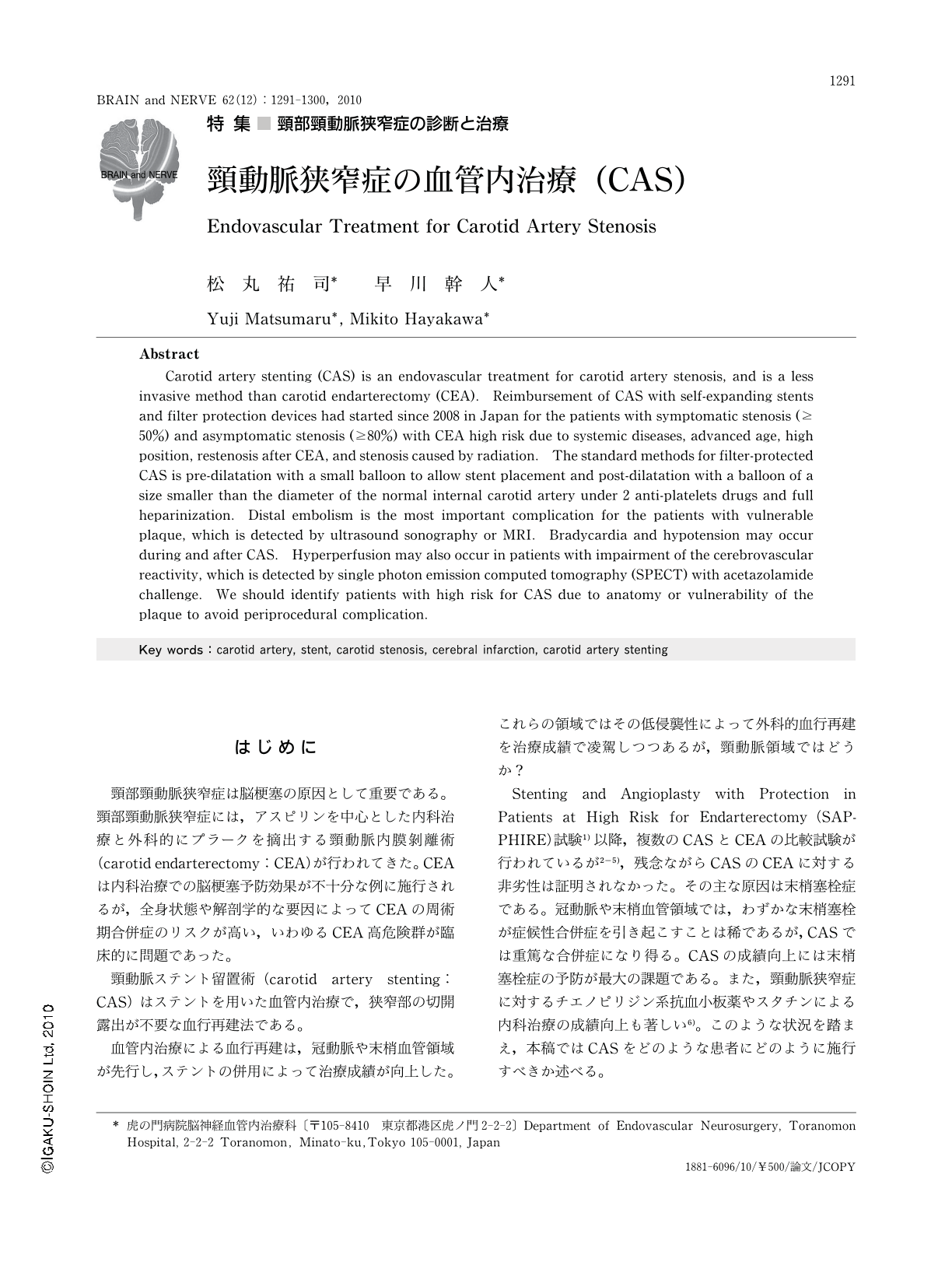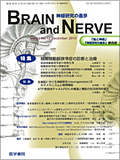Japanese
English
- 有料閲覧
- Abstract 文献概要
- 1ページ目 Look Inside
- 参考文献 Reference
はじめに
頸部頸動脈狭窄症は脳梗塞の原因として重要である。頸部頸動脈狭窄症には,アスピリンを中心とした内科治療と外科的にプラークを摘出する頸動脈内膜剝離術(carotid endarterectomy:CEA)が行われてきた。CEAは内科治療での脳梗塞予防効果が不十分な例に施行されるが,全身状態や解剖学的な要因によってCEAの周術期合併症のリスクが高い,いわゆるCEA高危険群が臨床的に問題であった。
頸動脈ステント留置術(carotid artery stenting:CAS)はステントを用いた血管内治療で,狭窄部の切開露出が不要な血行再建法である。
血管内治療による血行再建は,冠動脈や末梢血管領域が先行し,ステントの併用によって治療成績が向上した。これらの領域ではその低侵襲性によって外科的血行再建を治療成績で凌駕しつつあるが,頸動脈領域ではどうか?
Stenting and Angioplasty with Protection in Patients at High Risk for Endarterectomy(SAPPHIRE)試験1)以降,複数のCASとCEAの比較試験が行われているが2-5),残念ながらCASのCEAに対する非劣性は証明されなかった。その主な原因は末梢塞栓症である。冠動脈や末梢血管領域では,わずかな末梢塞栓が症候性合併症を引き起こすことは稀であるが,CASでは重篤な合併症になり得る。CASの成績向上には末梢塞栓症の予防が最大の課題である。また,頸動脈狭窄症に対するチエノピリジン系抗血小板薬やスタチンによる内科治療の成績向上も著しい6)。このような状況を踏まえ,本稿ではCASをどのような患者にどのように施行すべきか述べる。
Abstract
Carotid artery stenting (CAS) is an endovascular treatment for carotid artery stenosis,and is a less invasive method than carotid endarterectomy (CEA). Reimbursement of CAS with self-expanding stents and filter protection devices had started since 2008 in Japan for the patients with symptomatic stenosis (≥50%) and asymptomatic stenosis (≥80%) with CEA high risk due to systemic diseases,advanced age,high position,restenosis after CEA,and stenosis caused by radiation. The standard methods for filter-protected CAS is pre-dilatation with a small balloon to allow stent placement and post-dilatation with a balloon of a size smaller than the diameter of the normal internal carotid artery under 2 anti-platelets drugs and full heparinization. Distal embolism is the most important complication for the patients with vulnerable plaque,which is detected by ultrasound sonography or MRI. Bradycardia and hypotension may occur during and after CAS. Hyperperfusion may also occur in patients with impairment of the cerebrovascular reactivity,which is detected by single photon emission computed tomography (SPECT) with acetazolamide challenge. We should identify patients with high risk for CAS due to anatomy or vulnerability of the plaque to avoid periprocedural complication.

Copyright © 2010, Igaku-Shoin Ltd. All rights reserved.


